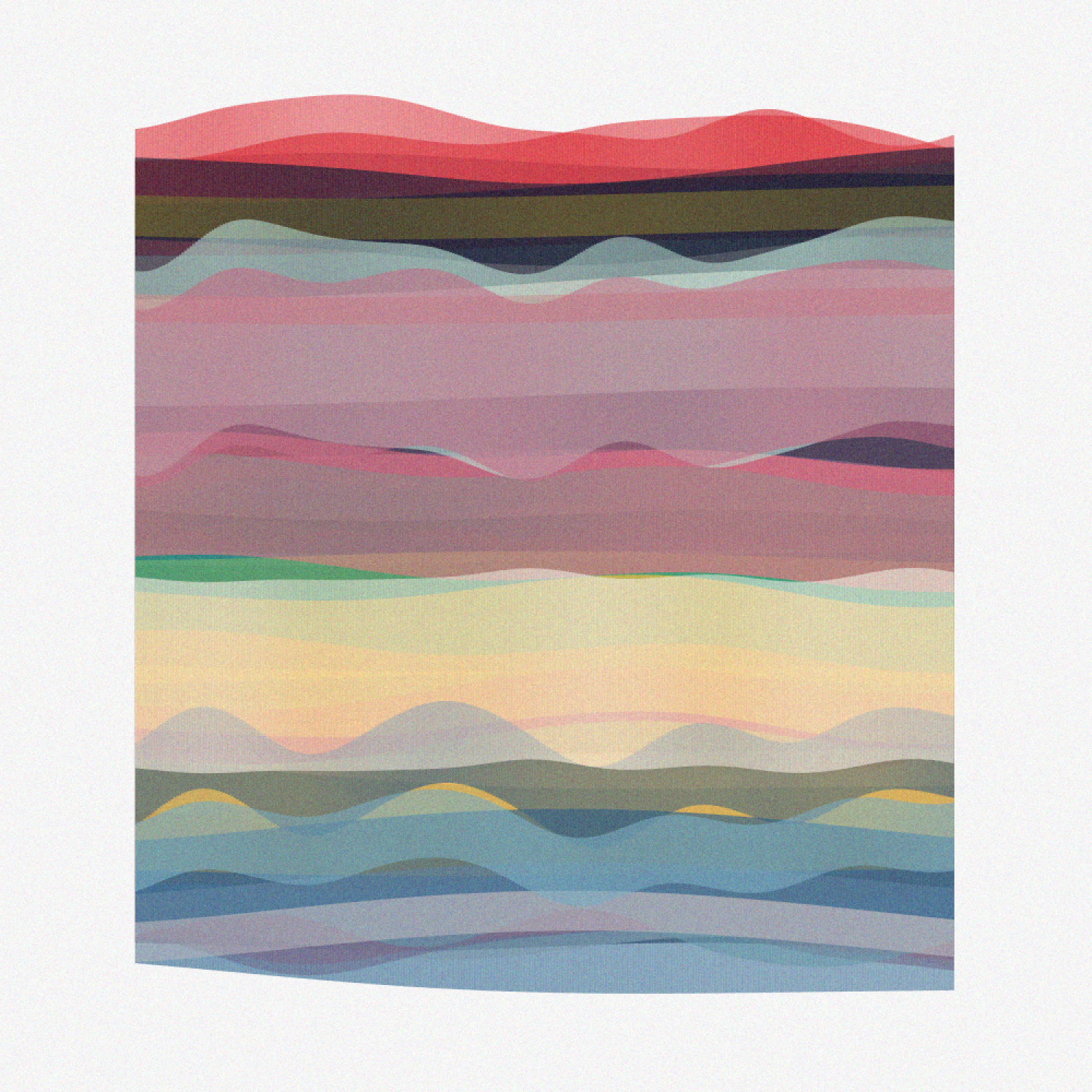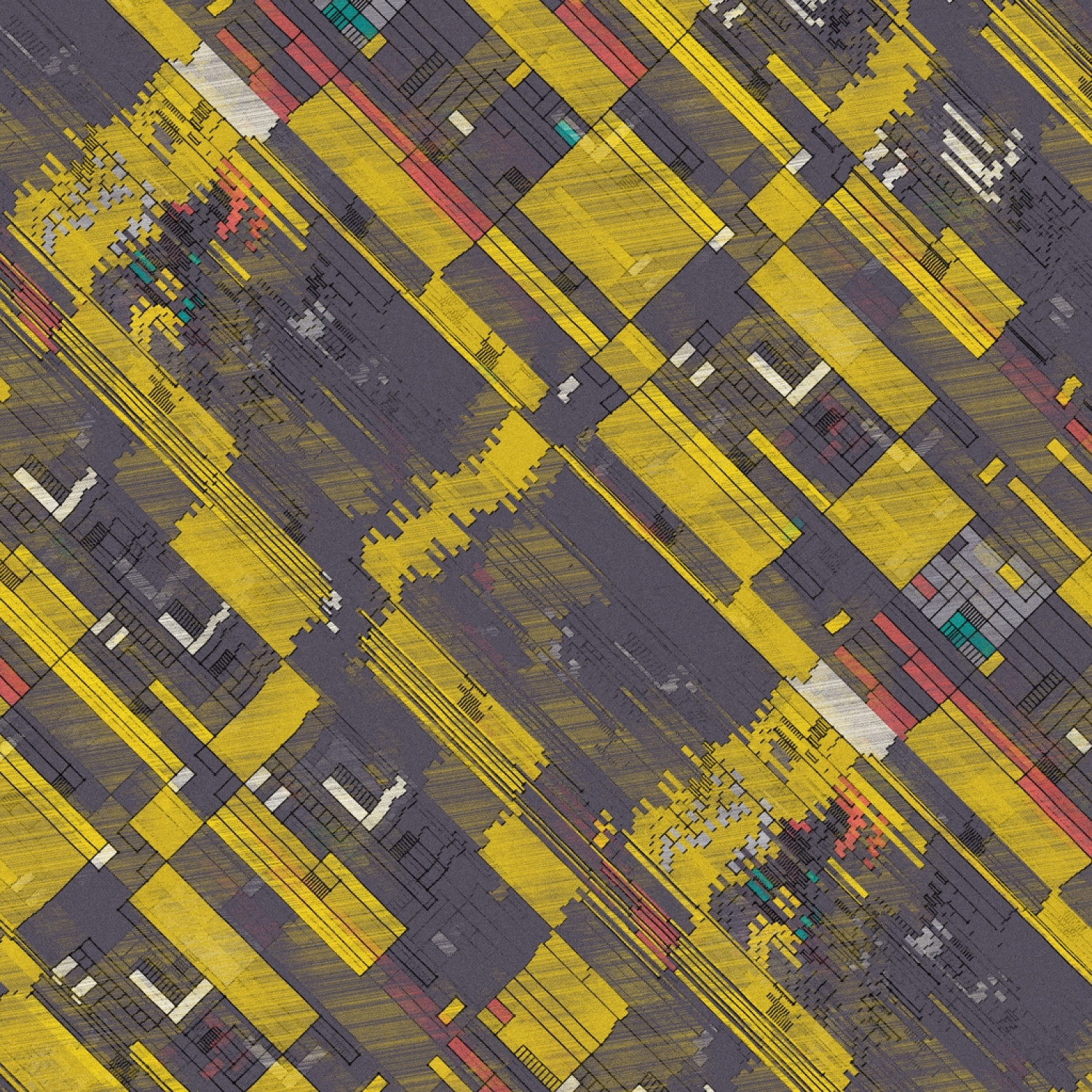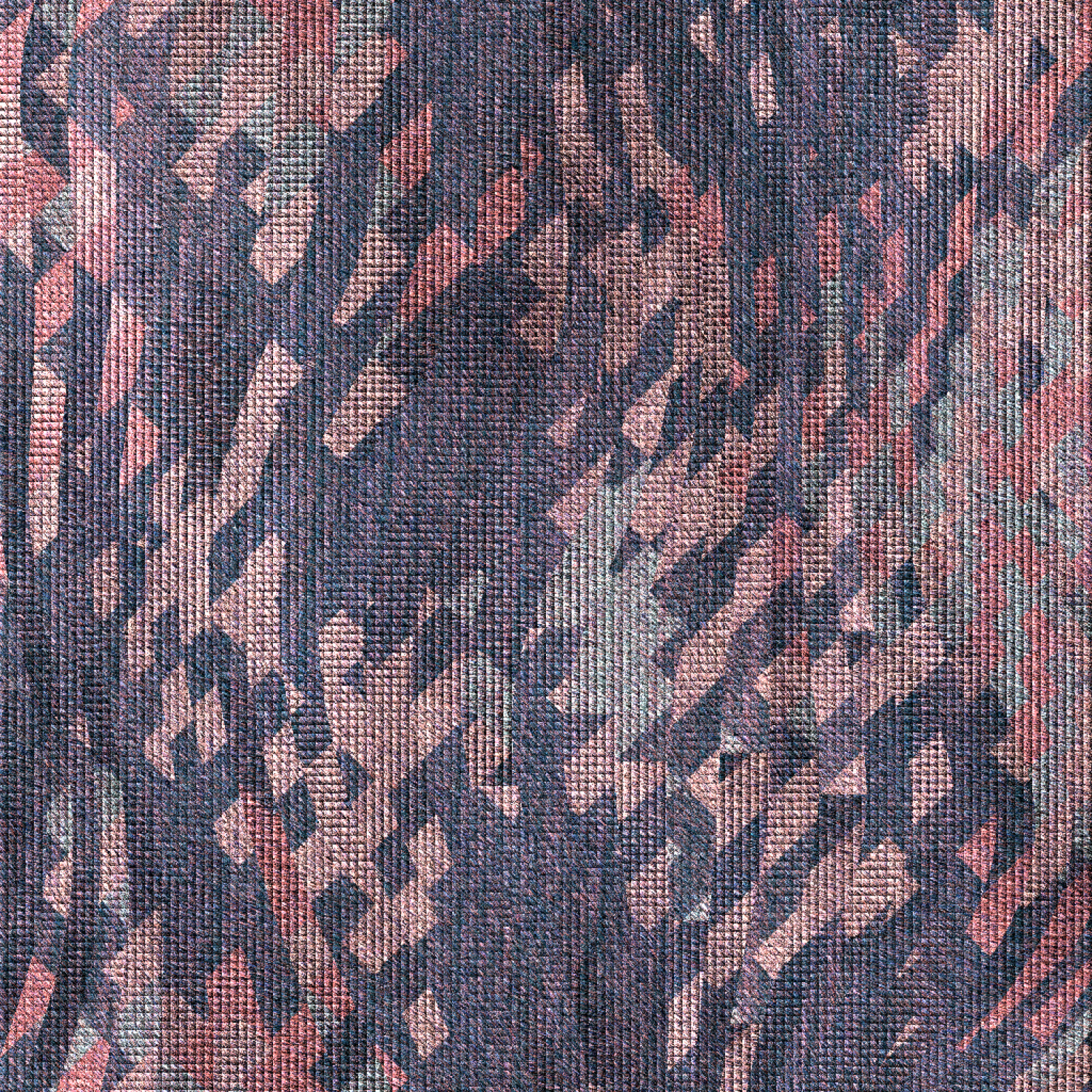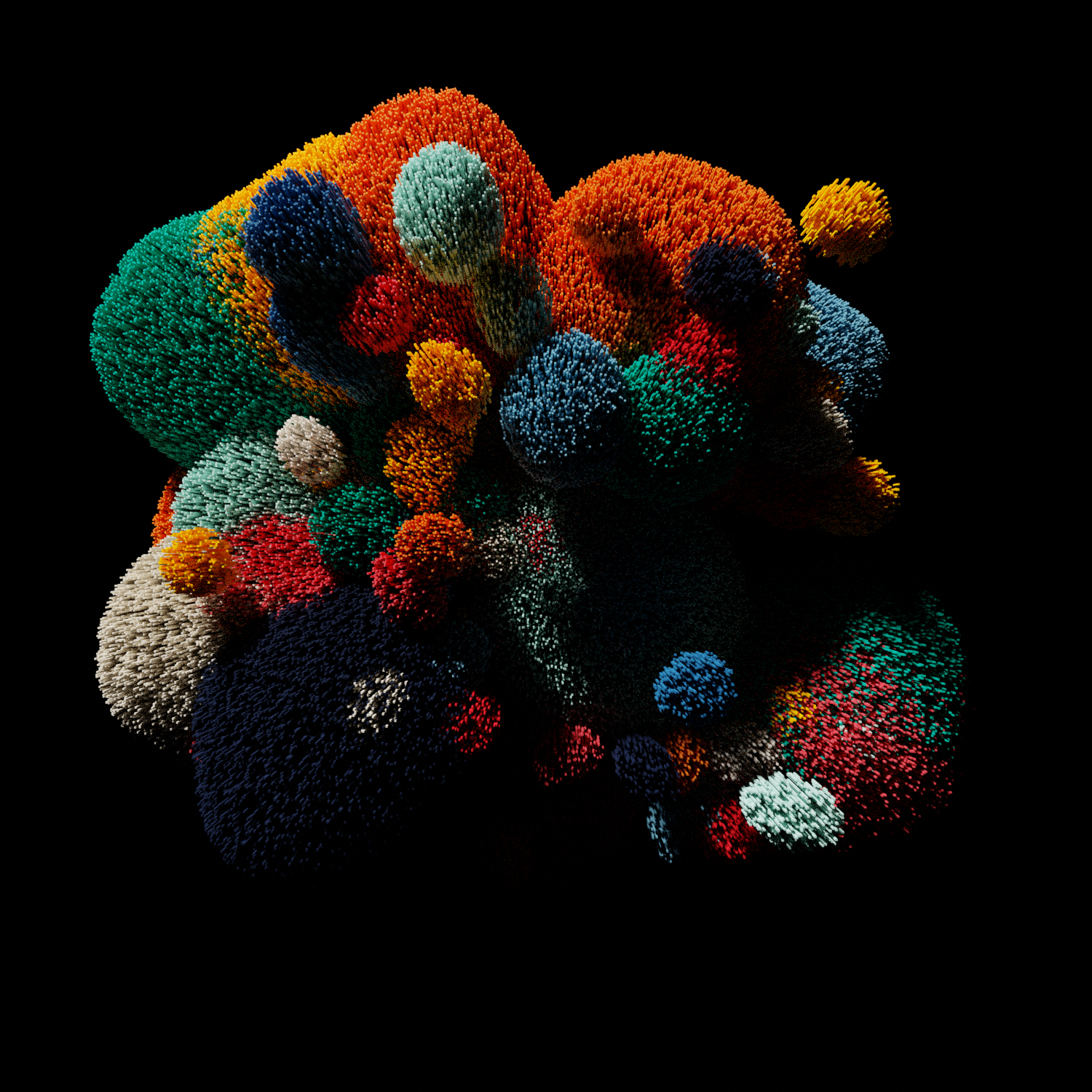TGAM Interviews
As part of our third exhibition "Issue #03 Red Pill" Landlines Art joins TGAM founders Xavier and Ruggero, for a casual conversation about his practice and generative art.

His earlier works focused on a more monochrome approach, playing with texture & depth in mesmerising ways. Later he delved into the utilisation of bright & bold colour palettes yielding great results which led to the start of his own smart contract for the Art Cardz project. An experienced developer in the Tezos community, Landlines has contributed to many of our favourite projects and worked with many highly regarded visionaries in the ecosystem.
Landlines Art shows no sign of slowing down his exploration of new techniques and processes, let’s dig in deeper and find out more about some of the finest pieces of generative art on the Tezos blockchain.
A master of highly varied outputs, “Sedimentary Dissolution” demonstrates the ability to vary an output from crisp clear line work to weathered and blurred results inspired by the geological process of new rock formation. “Textiles” is another masterclass in generative replication of real world materials, emulating the rich texture of textiles with extreme precision.
Landlines Art minted his first piece in April 2021 on the newly formed Hic et Nunc platform. From there his style has evolved in numerous ways, demonstrating varied techniques & exploring extensive colour palettes whilst maintaining a coherent style throughout.
The Generative Art Museum: Hello Landlines, pleasure to have you in the museum, how are you today?
Landlines Art: Doing well. Excited to be here!
TGAM: You are clearly no newcomer to the generative art scene, your projects are varied & masterfully executed. When did you begin your journey as an artist?
LA: I have been coding for well over a decade, and have been experimenting with creating art via code (both audio and visual) for almost as long. However, it is only in the last year or so that I have actually been able to dedicate a substantial amount of time to these types of pursuits. Honestly, it has been such a gift to be able to be creative in this way, a way that combines problem solving and visual aesthetics, and to have people that appreciate what I create. I am truly honoured.
TGAM: April 2021, in the early Hic et Nunc days, you minted your first piece “waves_712346” . How did you discover art on Tezos? Did you have a plan or any expectations of what would become of this newly discovered marketplace?
LA: I had very low expectations, and certainly did not anticipate all the truly astounding things that have happened since then. If I recall correctly, the piece sold quicker than I expected, and I was completely ecstatic to have sold something. After releasing a few more pieces, things really started to gain some traction, and at that point I really dedicated a lot more time to working on generative art.
TGAM: You have a few profiles on Objkt, what’s your reason for this? Do you think an artist can benefit from curation within their profiles & styles?
LA:
The main reason for having multiple profiles on what was at that time Hic et Nunc (and now these are of course visible on objkt) was to separate different lines of work. This was before objkt popularised the option of having different collections.
I do think that an artist can benefit from curation of their work into different styles, however, I think that using multiple collections is the more ideal way to do this. Using multiple accounts was simply my hacky way of solving this problem, when no other solutions were available.
TGAM: The Distrukt series uses a novel technique & burn mechanism to reveal the finished piece. Can you go into more detail about how you achieved this and the tech behind it?
LA: For Distrukt, the code is stored in a smart contract (KT18bTjQL13QdPGmRgVneGqTag4VCRxNBv4T). I wrote a simple script that uses the tzkt API to determine when someone has burnt a ticket, and when detected generation is triggered using the ophash of the burn operation as a seed. Once generation is complete, the script mints a new NFT with the generated artwork and airdrops it to the account that burnt the ticket. I have used a very similar mechanism for two other projects, Mycelium and Noisy Partitions. Noisy Partitions was my first ever project using this ticket / burn distribution mechanic.
TGAM: You’ve only ever released work on Tezos, what drew you to this chain & do you have any plans to explore any other platforms or chains?
LA: One of the main motivations for using Tezos was energy efficiency. So with the Ethereum merge upcoming, I am interested in exploring the possibilities on the Ethereum chain.
TGAM: In September 2021 you released Art Cardz, can you explain more about this project & how it came about?
LA:
I had the idea for Art Cardz several months before it was released. It took me a few months to actually learn all that was necessary to actually pull it off. I wrote all the smart contracts for the project, which were needed to randomly distribute card packs on the blockchain, manage allow lists, as well as handle the burn mechanism where a set of cards are burned and a new artwork is generated. I also had to of course create a Dapp too! At that point, I had never written a smart contract before, but fortunately my extensive experience writing code made the transition fairly painless. Once I had the technical experience to pull the project off, everything came together pretty quickly.
The response from the community vastly exceeded my expectations. I knew that the idea I had was unique, but the amount of creativity that was expressed via those participating in the project really astounded me. It was a true joy to be a part of that experience, and see all the ways that cards were combined to create different artworks.
TGAM: Archromat your fx hash genesis, what was the inspiration behind this series, and how was your first on experience on this new platform?
LA: It was also my first time really using javascript, so that was a bit of a learning experience. At that point, the platform was already quite well designed and easy to use. The only thing that I had difficulty with, as did many others, was the exact process for zipping our code. However, ciphrd was quick to jump in and explain what I was doing wrong!
TGAM: “Textiles” attempts to emulate the rich textures of textiles, which it manages to do so with great effect. What was the process with this series?
LA:
I spent a long time trying to get the texture right. The shader that I use to create the texture has lots of different things going on, and the final product was certainly the result of a few happy accidents while exploring tons of different approaches.
In terms of the actual process of creating the artwork, it was pretty similar to other things that I create. Continually experiment until I create something that I can actually stare at for a while. Then iterate on that concept to refine the details.













